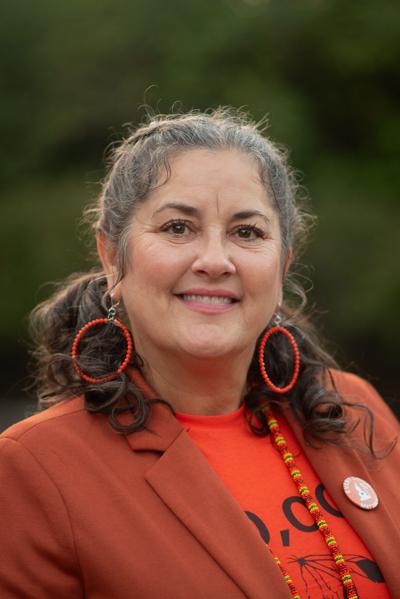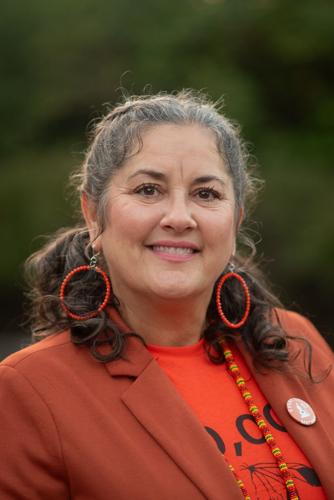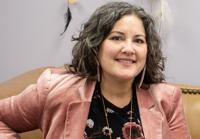With National Day for Truth and Reconciliation Day behind us, we must remind ourselves the journey toward reconciliation doesn’t end after one day of reflection.
The (TRC) remain a critical roadmap for all of us, but the real work happens in our daily lives, in our communities, and in how we show up for one another.
Reconciliation is often framed as a process of acknowledgment — recognizing the history of colonization, the horrors of residential schools and the trauma that has shaped generations of Indigenous people. But it is more than that. Reconciliation is about action and commitment. It’s about being part of the solution, not just bearing witness to the problem. And, most importantly, it’s about creating space for healing — for Indigenous communities and for our nation as a whole.
Nearly 10 years after the TRC’s calls to action were released, we can look back at the progress we’ve made. There have been changes in how we talk about Indigenous history, more awareness in schools and greater visibility of Indigenous culture in the public sphere. These are significant steps, but we must also ask ourselves: are these changes reaching the heart of the matter? Are they addressing the deeper work of healing and transformation?
Healing is not just about fixing what was broken — it’s about rebuilding, reconnecting and rediscovering.
For Indigenous people and communities, this means reclaiming land, language, culture and identity. It’s about reconnecting with the traditions that were taken from us and passing that wisdom on to the next generation. But healing also requires time, resources and, most importantly, space — space to grieve, to process and to grow. And that’s where everyone has a role to play.
For those looking to be part of the solution, the first step is listening. Listening to Indigenous voices, not just during National Truth and Reconciliation Day, but every day. This means being open to hearing stories that may challenge your assumptions or make you uncomfortable. It also means respecting that healing is not a one-size-fits-all process. Each community, each person, will walk their own path toward healing and our role as allies is to support that journey, not rush it.
Reconciliation is a shared responsibility. Governments, businesses, educators and individuals all have roles to play. We often hear about the need for Indigenous inclusion in corporate spaces or the importance of Indigenous-led initiatives in education. But inclusion without understanding can lead to tokenism and harm. It’s not enough to hire an Indigenous artist to create a mural or invite an Indigenous speaker to your event. True reconciliation means integrating Indigenous perspectives into the foundation of how we operate as a society — ensuring that Indigenous voices aren’t just present, but leading the way in shaping policy, culture and community.
For those in leadership positions — whether in government, business or community organizations — this means taking a step back and allowing Indigenous communities to guide the process of reconciliation. It means recognizing that Indigenous people are not only stakeholders but leaders in their own right, with the knowledge and wisdom needed to bring about meaningful change.
So, what does it mean to create space for healing? It means offering resources that Indigenous communities can use to rebuild on their own terms. It means providing support — financial, social and political — without imposing external expectations or timelines. It means understanding that healing from generations of trauma takes time, and that this process will not look the same for everyone.
At the same time, it’s important to recognize the broader societal healing that reconciliation offers. We cannot separate the history of colonization from the present realities of systemic racism, inequality and injustice.
For non-Indigenous Canadians, engaging in reconciliation is also about healing the divisions that have long existed in this country. It’s about working toward a future where we are not only acknowledging the past but actively shaping a future that values equity, inclusion and mutual respect.
The calls to action were designed to be a starting point — a guide for building relationships based on truth, justice and healing. They remind us that reconciliation is not just an Indigenous issue; it is a Canadian issue. Each of us, whether Indigenous or non-Indigenous, has a role in this work.
As we look toward the future, we must commit to walking this path together. It won’t always be easy and there will be challenges along the way. But with commitment, openness and respect, we can create a space where healing is not only possible but inevitable. A space where Indigenous communities are empowered to lead, and where all Canadians can be part of a future rooted in justice, equity and mutual understanding.
Reconciliation is not a destination — it’s a continuous process. And each of us has a responsibility to keep moving forward, to support one another, and to ensure that healing remains at the centre of this journey.
Error! Sorry, there was an error processing your request.
There was a problem with the recaptcha. Please try again.
You may unsubscribe at any time. By signing up, you agree to our and . This site is protected by reCAPTCHA and the Google and apply.
Want more of the latest from us? Sign up for more at our newsletter page.




















